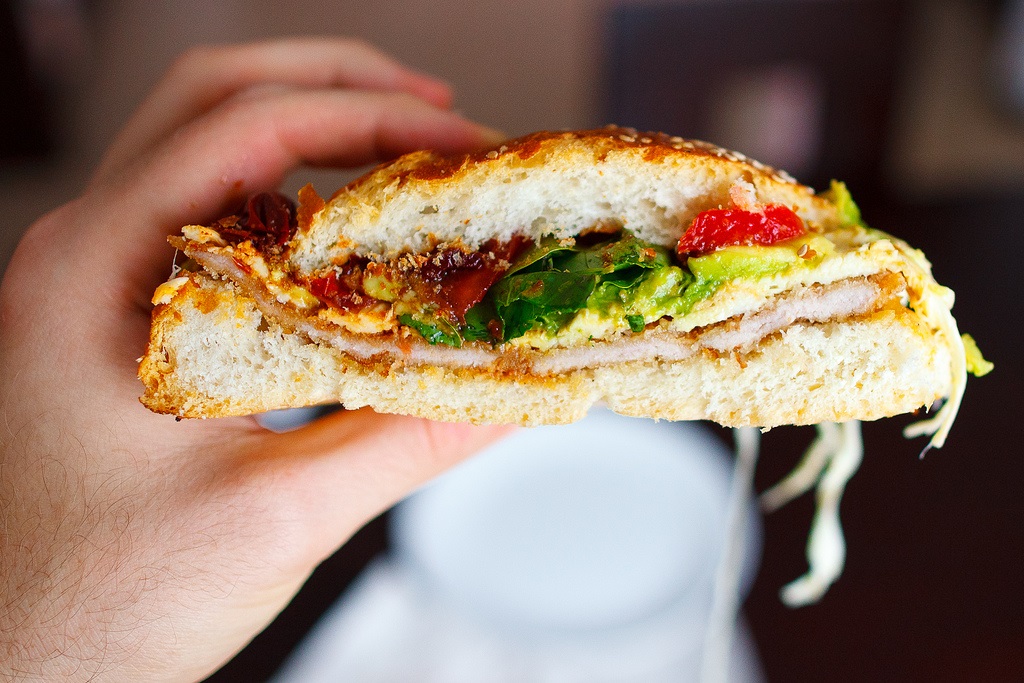For the holiday season this year, Starbucks released a unique drink – the Juniper Latte. The piney flavor of juniper is in Inception on Datassential’s Menu Adoption Cycle, the first, most trend-forward stage; it’s found on less than 2% of menus, mainly as a flavor in gin. But Starbucks is no stranger to the Inception phase of the MAC, introducing Americans to the flat white in 2018 when almost nobody in the US had heard of it and featuring drinks topped with beef jerky at its Roastery in Seattle. Other major chains are also taking chances on cutting-edge flavors: Arby’s has served up duck and venison sandwiches, Sonic offered up Pickle Juice Slushes this summer, and Shake Shack attracted long lines for the eel burger it introduced in New York last year. Retail brands are also jumping on flavor trends more quickly, with Conagra’s Healthy Choice brand featuring shakshuka, a dish still in Inception and found on less than 1% of restaurant menus, while President’s Choice, Canadian retailer Loblaw’s private label brand, now includes cricket powder as part of its product line.
As the trend cycle moves faster and younger generations seek out new experiences, it’s becoming even more important for every type of operator – not just the most avant-garde fine dining concepts – to not just pay attention to the next generation of foods and flavors, but to start acting on them even sooner. So consider this list of flavors and ingredients to watch for in the year ahead, which we’ve broken down by three cuisines, as more than a list that should be on your radar, but as tools for your culinary toolbox.
Mexican Cuisine
Papalo: Like a more in-your-face version of cilantro, this heat-loving herb is starting to show up on more menus as hydroponic and aquaponic farms in urban areas start to grow it for high-end chefs.
Tajin: Tajin likely isn’t new to you if you grew up in a Mexican family or neighborhood, but this salty-sour-spicy seasoning grew over 800% on menus in the past four years, used on fruits, paletas, cocktails, and…
Sandia Loca: Literally translating to “crazy watermelon,” this eye-catching display of fruit, chamoy (pickled fruit sauce), and tajin is an Instagram favorite.
Asian Cuisine
Asian Whiskeys: Asian whiskey brands were some of the fastest-growing options on menus over the past year. While brown spirits like bourbon have been growing both in drinks and menu items (think bourbon-maple french toast and bourbon chocolate cake), they are starting to make way for their Asian counterparts.
Cheese Tea: This drink has been making the leap from Asia to the US, featuring iced tea with a salty-sweet cheese foam topping. It may sound unique, but cheesecake flavors and Starbucks’ salted cream cold foam aren’t far removed.
Katsu Sando: “Katsu sandos are everywhere, and we’re here for it,” declared Bon Appetit earlier this year. The simple combination of pork or Wagyu beef on Hokkaido milk bread has been showing up in major metropolitan areas in the US, often with eye-popping prices that get attention.
Middle Eastern Cuisine
Booza/Dondurma: Sometimes called Arabic ice cream, booza (known as dondurma in Turkey) has a stretchy, almost taffy-like texture that keeps it from melting in the hot sun – and makes it ten times as rich as gelato.
Gazoz: The original mocktail, this refreshing Israeli drink combines sparkling water and fruit syrups, but today’s vendors are giving it an upgrade with botanicals, flowers, herbs, and even fermented fruits.
Barberries: This sweet-tart dried berry is primarily used to cut through rich dishes in the Middle East, particularly in Persian cuisine, while in the US we’re seeing them used in salads and as a topping for yogurt and oatmeal.
Now that you know some of the cutting-edge trends just starting to make their way onto US menus, how will you be more trend-forward in 2019?
Mike Kostyo is the resident trendologist at Datassential, a supplier of trends, analysis and concept testing for the food industry. For Datassential’s full list of 2019 trend predictions, contact Kostyo at [email protected].
__________________________________________________
If you enjoyed this article, sign up for GMA SmartBrief, National Restaurant Association SmartBrief and FMI dailyLead to get news like this in your inbox, or check out all of SmartBrief’s food and beverage newsletters, as we offer over 20 newsletters covering the industry from restaurants to food retail to food manufacturing.
